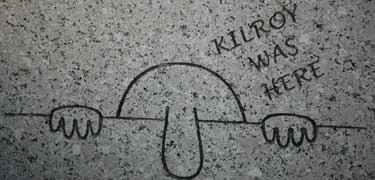A Super Evening Was Had By All (Page One)
Bienvenida or Willkommen to the Nightlighters "Fiesta-Fest" held at the LAX Marriott on this 77th day before Christmas.... That's scary! It will be another great Nightlighters evening of fun, friendship, and dancing!!!
You Are Invited To Fiesta Fest

A Quick Collage Of The Evening...

Click for full sized image (3200px wide)
About "Octoberfest"

Did You Know? -
Oktoberfest is a 16–18 day beer festival held annually in Munich, Bavaria, Germany, running from late September to the first weekend in October. It is one of the most famous events in Germany and is the world's largest fair, with more than 5 million people attending every year. The Oktoberfest is an important part of Bavarian culture, having been held since 1810. Other cities across the world also hold Oktoberfest celebrations, modeled after the Munich event.
The Munich Oktoberfest originally took place during the sixteen days up to and including the first Sunday in October. In 1994, the schedule was modified in response to German reunification so that if the first Sunday in October falls on the 1st or 2nd, then the festival would go on until October 3 (German Unity Day). Thus, the festival is now 17 days when the first Sunday is October 2 and 18 days when it is October 1. In 2010, the festival lasted until the first Monday in October, to mark the 200-year anniversary of the event. The festival is held in an area named the Theresienwiese (field, or meadow, of Therese), often called Wiesn for short, located near Munich's center.
About "Fiesta"

Did You Know? A festival or gala' is an event, usually and ordinarily staged by a local community, which centers on and celebrates some unique aspect of that community and the Festival.
Among many religions, a feast is a set of celebrations in honour of God or gods. A feast and a festival are historically interchangeable. However, the term "feast" has also entered common secular parlance as a synonym for any large or elaborate meal. When used as in the meaning of a festival, most often refers to a religious festival rather than a film or art festival.
In the Christian liturgical calendar there are two principal feasts, properly known as the Feast of the Nativity of our Lord (Christmas) and the Feast of the Resurrection, (Easter). In the Catholic, Eastern Orthodox, and Anglican liturgical calendars there are a great number of lesser feasts throughout the year commemorating saints, sacred events, doctrines, etc.
Pre-Dinner Activities Mean It Is Time To Visit Old And New Friends

The table decorations were exactly in the spirit of things
Did You Know? - Maracas (About this sound pronunciation (help·info), sometimes called rumba shakers) are a native instrument of Latin America. They are a percussion instruments (idiophones), usually played in pairs, consisting of a dried calabash or gourd shell (cuia "cue-ya") or coconut shell filled with seeds or dried beans. They may also be made of leather, wood, or plastic.
Often one ball is pitched high and the other is pitched low. There is evidence of clay maracas used by the natives of Colombia 1500 years ago. The word maraca is thought to have come from the Tupi language of Brazil, where it is pronounced 'ma-ra-KAH'. They are known in Trinidad as shac-shacs.
Although a simple instrument, the method of playing the maracas is not obvious. The seeds must travel some distance before they hit the leather, wood, or plastic, so the player must anticipate the rhythm. One can also strike the maraca against one's hand or leg to get a different sound. Band leader Vincent Lopez hosted a radio program in the early 1950s called Shake the Maracas in which audience members competed for small prizes by playing the instrument with the orchestra.

We were honored with the young folks who really like the music and dance - (Angelita) and husband (Julian)

We focused in on thee young people... p.s. They have NOT watched Casablanca yet!

Richard and Barbara were guests this evening

A matching vow tie was a nice touch

We haven't seen you in quite a while.... Wazz happening??

Ah ha.... The gentlemen found the bar!

We checked outside and everyone showed up.... That is a good thing

Visiting is in full swing

Perhasps a quick sketch?

Nice of the gentlemen to hold the ladies drinks....

Patiently waiting for the music to begin....

Luraine and Ted drew first blood.... On the dance floor first

A bit of artistic license...

Checking the dance cards

Dance engagements card for 11 January 1887, showing a list of all the
dances for the evening - valse, polka, lancers and quadrille; opposite
each dance is a space to record the name of the partner for that dance. After
the event the card was probably kept as a souvenir of the evening
Did You Know? -
A dance card or programme du bal (also known by its German-language name, Ballspende, plural Ballspenden) is used by a woman to record the names of the gentlemen with whom she intends to dance each successive dance at a formal ball. They appear to have originated in 18th century, but their use first became widespread in 19th century Vienna, especially at the massive balls during Fasching before Lent.
Serious coordination is underway
Did You Know? - Kilroy was here is an American popular culture expression, often seen in graffiti. Its origins are debated, but the phrase and the distinctive accompanying doodle—a bald-headed man (possibly with a few hairs) with a prominent nose peeking over a wall with the fingers of each hand clutching the wall—is widely known among U.S. residents who lived during World War II.
